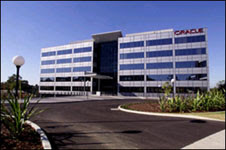I don't want to labour this point but it does make a nice introduction for what I want to write about this time out. I saw Paul Coby, CIO of British Airways present at a conference last year and one of his favourite phrases resonated with me, "There are no IT projects. Only business projects". He has a point. If you're doing technology for the sake of technology and not to help your customers or to improve your business then you're not doing it right. Now that's very easy for a high-flying CIO to say, how does he back it up. How, I wondered, does the thorny issue of executive sponsorship work itself out at BA?
Here's another quote for you, "There is nothing more powerful than an idea whose time has come." Victor Hugo this time. And, as I've blogged about before there is a single, simple, brilliant idea at the heart of SOA to prove that SOA's time has come, namely, building something once and re-using it is a good thing to do.
This famous quote of Victor Hugo is paraphrased in the movie 'The Contender'. As President Jackson Evans (Jeff Bridges) campaigns for his Vice Presidential nominee to be approved by the Senate he says "...there is no weapon as powerful as that of an idea whose time has come". As the nominee - Senator Laine Billings Hanson (Joan Allen) - finds out the idea is one thing, having some executive sponsorship to back it up is another. And lets face it, there is no better executive sponsorship than that of the President of the USA.
You probably won't have that level of sponsorship for your SOA efforts, so you'll have to settle for executive rather than presidential. What do you need from that executive for your SOA to succeed? What areas do they need to think about to help and support SOA in your organisation?
I've identified six areas;
1. Business Strategy and Process: Organisations need IT implementations that support the business and its changing needs. This is all about thinking about the business project, not the IT project. This is about providing an environment that links the management and measurement of IT with the management and measurement of the business strategy. This is where your sponsor is a key sounding board and information resource. What are the KPI's of your organisation and how does your planning in IT help to achieve them?
2. Architecture: Nearly all organisations that I have worked in fund and build IT by projects in lines of business. This leaves enterprise-wide processes and integration to be considered as afterthoughts and creates a barrier to change. The A in SOA helps organisations build an IT environment based on standards, distribution, loose coupling, re-use and business process representation that is designed to respond to change and will operate and integrate at the enterprise level, the executive level.
3. Building Blocks: A lack of consistency and repeatability in IT implementation hinders most organisations in achieving their goals with respect to IT budgets and agility. The building blocks metaphor offers a common, standards-based foundation on which companies can deliver IT, providing a basis for achieving consistency and maximising the ability to repeat successes by reusing implementations and the core infrastructure.
4. Projects and Applications: As in point 2 above, IT is traditionally developed by projects within lines of business – often creating excessive spending on duplicate functionality and compromising the integrity of enterprise processes. Executive sponsorship here helps you to catalogue, categorise, and modernise functions offered by systems and applications – standardising the manner in which those functions are offered, while reducing redundancy and promoting consistency. Duplication goes down, re-use goes up.
5. Organisation and Governance: The organic growth of our organisations has yielded an IT infrastructure that is difficult to manage and costly to change. Concentrate on creating an organisational structure and mandate - executive sponsorship needed here if you're going to mandate anything by the way - to govern the delivery of IT in standard ways, thereby enabling IT to meet the needs of the business and optimise IT utility.
6. Costs & Benefits:The $64,000 question. What is this going to cost to build? How much is it going to cost to run? More importantly, what are the predicted benefits from using it? And remember, an IT benefit without a Business benefit is not a benefit at all. Key development metrics, productivity measures, reuse measures, general best practices and internal/external benchmarking. And how does all of that link back to the Business Strategy outlined in Point 1?
My Brazilian colleague Marcelo Simoes has also penned a take on this recently with his "Five-Step Action Plan for Executives". He makes several good points in his piece and I particularly like his Fifth step - The victory dance.
More Jeff Bridges to close with. You're probably not going to get The Dude to sponsor your SOA efforts. But get yourself a sponsor. One that can think big, start small and move fast.
The Oracle Australia and New Zealand Middleware and Technology Blog.
Thursday, February 12, 2009
All The President's SOA
Subscribe to:
Post Comments (Atom)


No comments:
Post a Comment